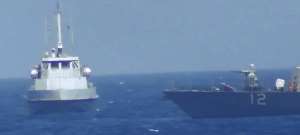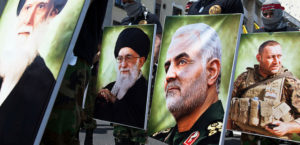
Iran Flexing It’s Muscles?
Hostility between the USA and Iran is nothing new. Our military presence in the waters around Iran has been a constant reminder to their leaders that we are the most powerful naval force in the world. Our presence in the Persian Gulf is particularly important to our relationship with Saudi Arabia due to their dependence on the US for military protection from Iran given the hostile relationship between the two Middle Eastern nations. Recent events on the Arabian Peninsula (particularly between Yemen and Saudi Arabia) have lead some to fear that Iran and the Saudis are on the verge of a proxy war in the region. Now Iran has announced plans to send warships in the international waters of the Gulf of Mexico. This will likely lead to a response from the US Navy to monitor and perhaps deter activities off the coast of North America. Given the recent increased hostilities between the US and Iran revolving around the nuclear deal that was struck during the Obama Administration, this move seems particularly aggressive and symbolic.
Iranian warships are set to leave the waters of the Persian Gulf to sail across the world and tour another gulf—the one that lies between the U.S. and Mexico.
At a time when Iran is looking to expand and modernize its military in the face of what is seen as a growing U.S. threat, its newly appointed navy commander, Rear Admiral Hossein Khanzadi, held his first press conference Wednesday, announcing that a fleet of Iranian ships would soon depart for the Atlantic Ocean and the Gulf of Mexico en route to visits to a number of South American countries, Iran’s semi-official Tasnim News Agency reported. The move is reportedly part of a push to project Iran’s military on a more global scale and establish international ties as President Donald Trump and his allies, including Israel and Saudi Arabia, seek to isolate the revolutionary Shiite Muslim power.
“Sailing in open waters between Europe and Americas should be the navy’s goal, which will be realized in the near future,” Rear Admiral Habibollah Sayyari, who served as navy chief for 10 years before being assigned by supreme leader Ayatollah Ali Khamenei to deputy coordinator of the army, said earlier this month at his successor’s ceremony, according to the Tasnim News Agency and translated by Caspian News.
Khanzadi also pledged to introduce new vessels and submarines next year and announced other upcoming plans to bolster the country’s naval power. He said the new Peykan-class missile-launching corvette Separ (shield) would join the country’s Caspian Fleet next week. In addition to the planned reintroduction of refurbished and renovated vessels, a new navy airport was reportedly set to be launched in the southeastern port city of Jask, along the Makran coast.
Since the 1979 Islamic Revolution deposed West-installed Shah Mohammad Reva Pahlavi, the U.S. and Iran have had poor relations. The U.S. has also firmly backed its main Arab ally, ultraconservative Sunni Muslim kingdom Saudi Arabia, in a decades-long struggle to limit Iran’s influence. That campaign has become increasingly hostile in recent years, with both sides backing opposing political and militant movements across the region. As Iran outmatched its foe in crucial arenas, Israel has offered to help Saudi Arabia constrain Iran’s expanding foothold.



